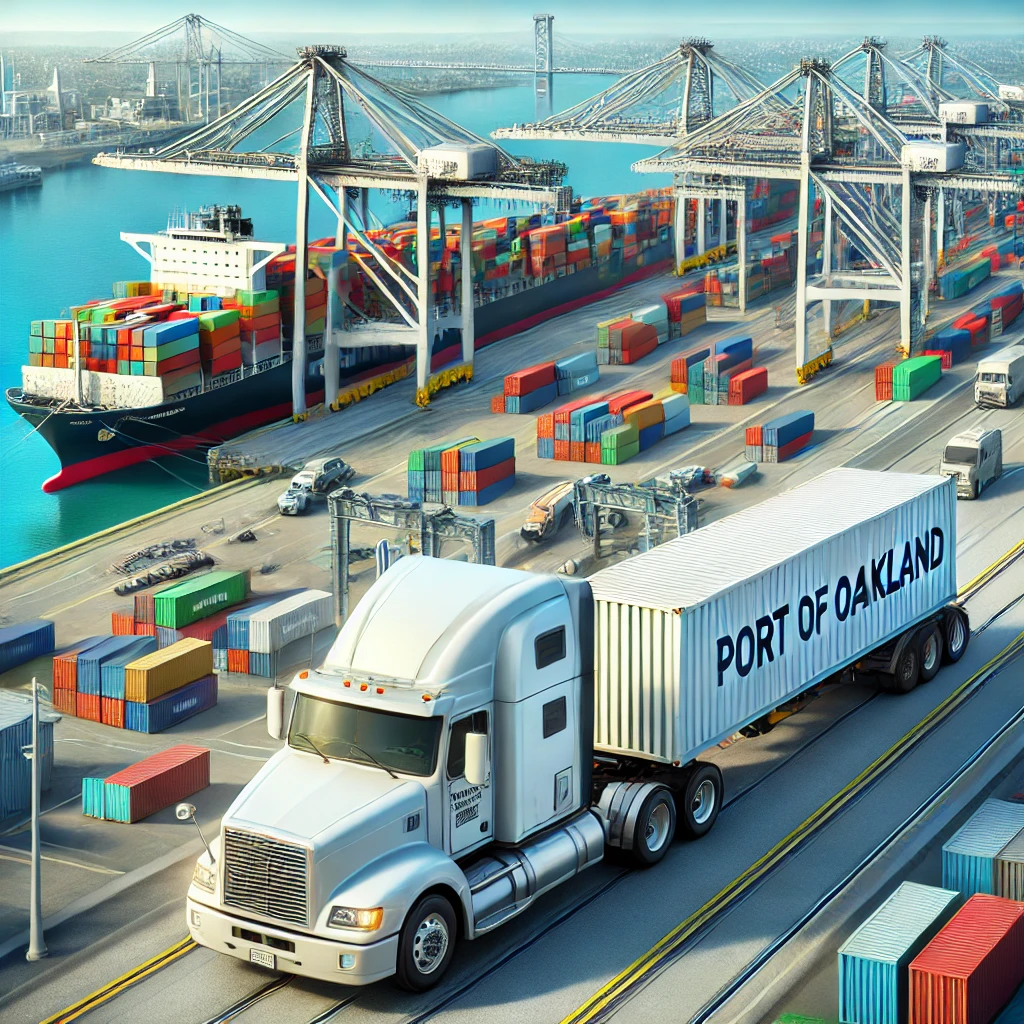Key Insights on the Port of Oakland: A Hub for Global Trade

What is the Port of Oakland?
The Port of Oakland is located in Northern California, strategically positioned along the San Francisco Bay. It serves as a critical international gateway for both imports and exports. As one of the busiest ports in the United States, it handles a wide range of goods, from consumer products to bulk commodities, with a strong emphasis on containerized cargo.
The Port of Oakland operates several terminals dedicated to container shipping, bulk and breakbulk cargo, as well as cruise and passenger services. It is the largest container port on the U.S. West Coast, ranking highly in terms of container throughput and total cargo volume.
Key Features of the Port of Oakland
- Strategic Location: Located in the heart of the San Francisco Bay Area, the Port of Oakland offers direct access to major global shipping lanes, providing easy connections to Asia, Europe, and other key markets.
- Cargo Handling Facilities: The port has world-class container terminals, specialized facilities for handling bulk and breakbulk cargo, and equipment designed to handle large volumes efficiently.
- Environmental Sustainability: The Port of Oakland is committed to sustainability, focusing on reducing its environmental footprint with initiatives such as cleaner truck technology, air quality monitoring, and green building certifications.
- Economic Impact: The port is a major economic engine for the region, generating billions of dollars in annual trade and creating thousands of jobs in the Bay Area.

Why the Port of Oakland Matters for Global Trade
The Port of Oakland serves as an essential gateway for international commerce, especially in the Pacific Rim region. Here’s why it’s a critical part of the global supply chain:
1. Containerized Cargo Handling
- The Port of Oakland is a major handler of containerized cargo, processing millions of TEUs (Twenty-foot Equivalent Units) annually. These containers are filled with a wide variety of products, including electronics, clothing, machinery, and food products.
- With multiple container terminals, the Port of Oakland has the capacity to manage large volumes of goods, ensuring the efficient movement of trade.
2. Major Shipping Lines and Global Connectivity
- The Port of Oakland is serviced by major international shipping lines, including Maersk Line, COSCO, and CMA CGM, among others.
- Its location on the West Coast makes it an important point of entry for goods coming from Asia, particularly China, Japan, and South Korea.
- The port’s facilities support efficient transshipment to other U.S. ports and global destinations, helping streamline supply chains and reduce shipping times.
3. Bulk and Breakbulk Cargo
- The Port of Oakland is also a leader in bulk and breakbulk cargo handling. It processes large shipments of agricultural products, dry bulk, and other commodities.
- This includes bulk grain exports to Asia, as well as shipments of logs and wood products. The port’s bulk terminals are vital for industries such as agriculture and forestry.
4. Green Initiatives and Technology
- The Port of Oakland has made strides in environmental sustainability, including implementing green port technology and reducing emissions from port operations. These initiatives help ensure that the port remains an eco-friendly trade hub.
- The port has implemented cleaner technologies such as electric-powered cranes, renewable energy initiatives, and enhanced energy efficiency across its operations.
How Businesses Benefit from the Port of Oakland
Cost-Effective Logistics Solutions
For businesses involved in importing and exporting goods, the Port of Oakland offers cost-effective logistics solutions. With its strategic location and modern facilities, the port facilitates the smooth movement of goods at competitive shipping rates.
- Reduced Shipping Times: The Port of Oakland provides direct access to key international shipping lanes, reducing transit times between the U.S. and major Asian markets.
- Efficient Customs Processing: The port’s proximity to major logistics centers and customs facilities allows for efficient clearance and delivery, minimizing delays and reducing logistics costs.
.

Import-Export Hub
For importers and exporters, the Port of Oakland is a prime entry and exit point for products. It serves industries such as technology, retail, food and beverage, automotive, and manufacturing.
- Diverse Industries: Companies in various industries rely on the Port of Oakland for timely deliveries of goods. It’s particularly important for businesses dealing with electronics, machinery, consumer products, and bulk goods.
- Shipping and Warehousing: The port is equipped with extensive warehousing and storage options, offering businesses ample space to store goods before they are transported to their final destinations.
International Trade Expansion
For businesses looking to expand into international markets, the Port of Oakland offers unparalleled access to global trade routes, especially in the Pacific Rim. Its direct links to China, Japan, and other Asian markets allow businesses to scale operations and reach new customers across the globe.
- Access to Growing Markets: By using the Port of Oakland, companies can gain access to emerging markets in Asia and other regions, where demand for goods is growing rapidly.
- International Logistics Partnerships: The port’s global shipping connections make it easy for businesses to partner with international logistics providers for smooth shipping operations.

Conclusion
The Port of Oakland is a cornerstone of global trade and a critical hub for U.S. businesses involved in importing and exporting goods. Its strategic location, state-of-the-art facilities, and commitment to sustainability make it an essential asset for businesses looking to thrive in the international marketplace.
Whether you’re managing containerized cargo, bulk shipments, or logistics services, understanding the features and benefits of the Port of Oakland can help businesses optimize their supply chains, reduce costs, and improve delivery times. By leveraging this key transportation gateway, businesses can enhance their competitive advantage in the global economy.
